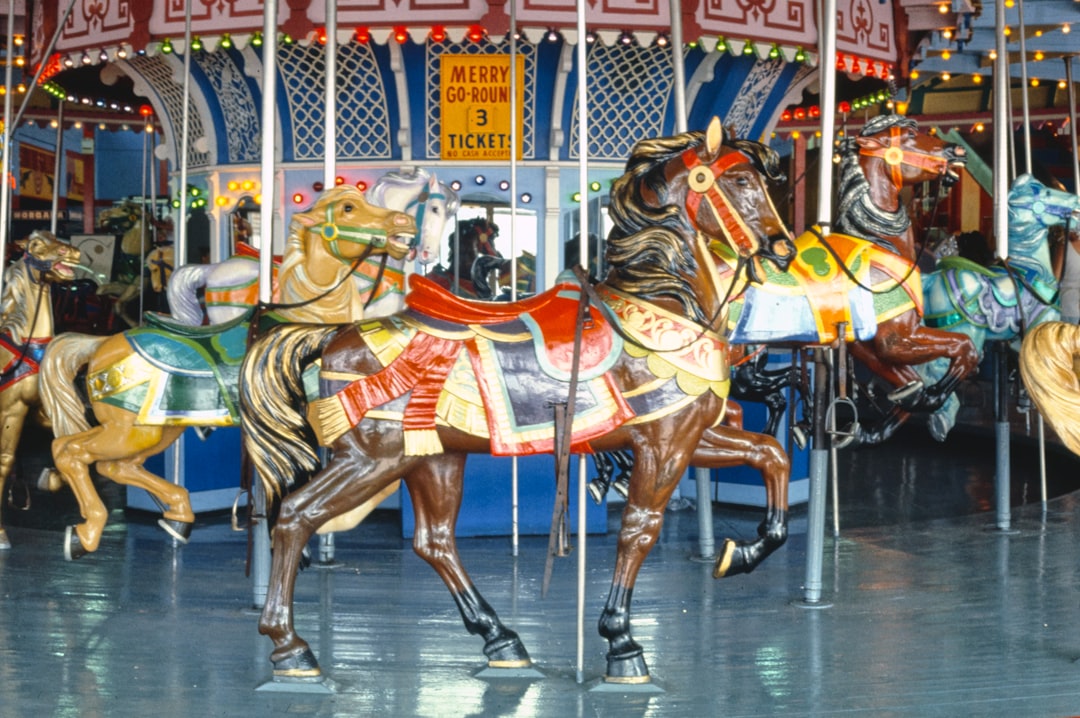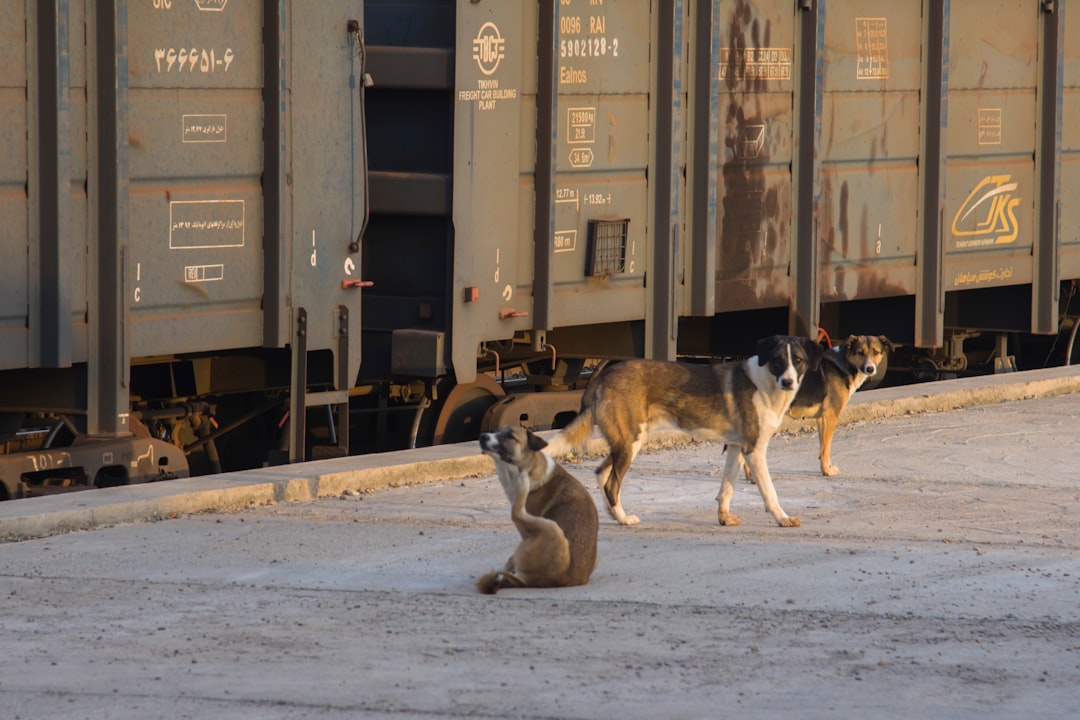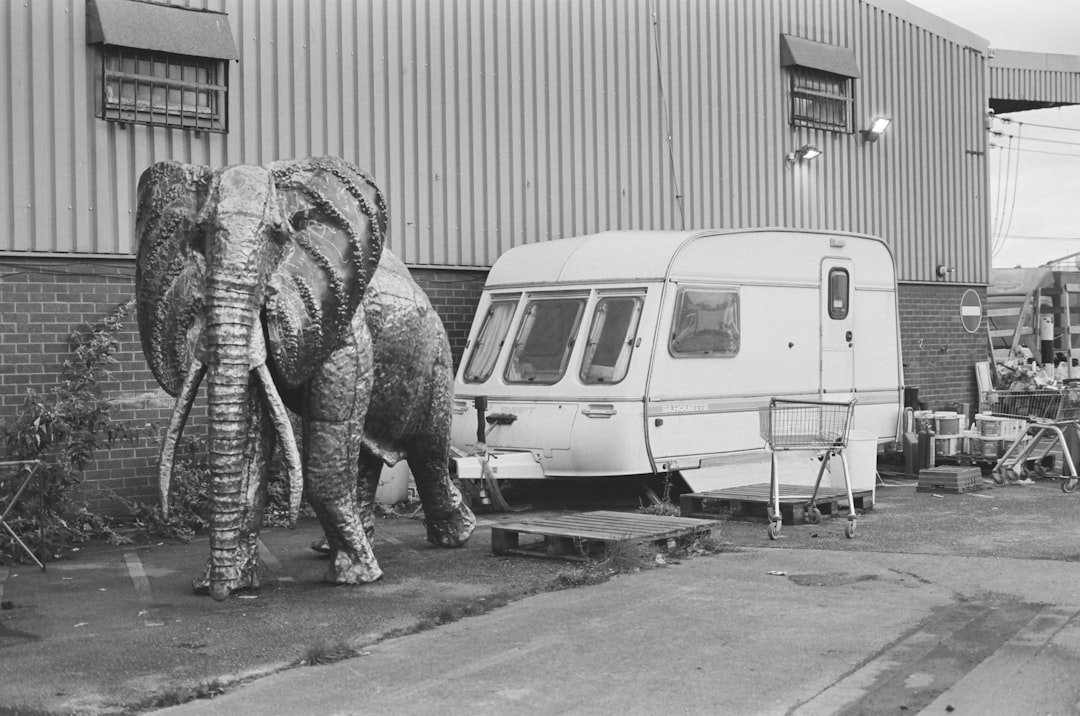

Engage prospects with a scan and streamline customer engagement with FREE QR code marketing tools by Sona – no strings attached!
Create a Free QR CodeFree consultation

No commitment

Engage prospects with a scan and streamline customer engagement with FREE QR code marketing tools by Sona – no strings attached!
Create a Free QR CodeFree consultation

No commitment
In today’s digitally driven world, QR codes have evolved from a novelty to a strategic powerhouse for bridging offline engagement with online action. For circus animal transport services, QR codes offer a simple yet powerful solution for coordinating complex logistics, ensuring compliance with animal welfare regulations, and providing instant access to important documentation and care protocols without the need for apps or complicated technology.
Circus animal transport services operate at the crossroads of regulation, animal welfare, and logistics. Persistent sector challenges such as tracking compliance across multiple locations, maintaining accurate documentation that moves with each animal, and quickly communicating regulatory changes often result in missed updates or delayed responses. Fragmented or outdated records can lead to overlooked welfare issues or compliance lapses, jeopardizing both operational efficiency and animal well-being. QR codes can be naturally embedded throughout these workflows, transforming previously invisible touchpoints into actionable, trackable digital records that professionals can access immediately.
By implementing QR technology, circus animal transport teams can eliminate gaps caused by paper-based or isolated digital systems. This transition supports a consolidated, instantly accessible view of each animal’s journey, improves traceability, and ensures that welfare and compliance data are available at the exact moment of need. Ultimately, this builds safer, more transparent, and agile transport operations.

QR codes close the gap between physical touchpoints and digital outcomes, streamlining compliance, animal care tracking, and incident response. Traditional analog methods such as paper manifests, printed animal care checklists, laminated handling protocols, and static route sheets often result in missed events such as unsurfaced welfare checks or unrecorded compliance steps. These gaps cause lost time during audits or inspections and introduce risk for animals and teams alike.
Here’s how to implement QR codes effectively across the full journey from planning to delivery. Start by replacing fragile, one-time-use paper assets with durable, scannable QR labels that live on transport crates, vehicle doors, and equipment. Then layer in dynamic destinations that can be updated as regulations or plans shift. Make sure the call to action is explicit and benefit-oriented so every handler, vet, and inspector knows what they get when they scan.
By approaching implementation step-by-step, circus animal logistics teams can overcome the pitfalls of manual paperwork and fragmented reporting. The result is unified, digitized processes that make key actions visible, auditable, and easier to manage in real time. Outdated binders and clipboards turn into living workflows that inform decisions in the moment instead of after the fact.

Circus animal transport services face blind spots and inefficiencies that directly affect operations. QR codes offer practical, field-ready solutions that reduce friction, improve safety, and keep every stakeholder accountable.
Integrating QR codes into workflows on care station signage, manifests, and inspection cards helps close information gaps and minimizes risks of missed or delayed actions. When every crate and vehicle becomes a digital touchpoint, teams gain the visibility needed to ensure animal welfare and regulatory compliance from departure to arrival.

Managing and sharing critical information is a recurring challenge in animal transport. QR codes can flex to serve different needs, making it easier to reduce friction and keep everyone aligned.
Centralized QR platforms such as Sona QR allow real-time updates to destinations, which reduces the risk of using static, outdated materials. Dynamic formats are particularly valuable in this vertical because protocols and routes can change mid-journey.

Growth opportunities in circus animal transport depend on surfacing and unifying data that would otherwise remain fragmented or anonymous. QR codes create visibility where it mattered least in the past, such as a crate door or a staging-area poster, then consolidate those signals into a single operational view.
High-impact QR placements include:
Using QR codes at these points ensures previously offline moments are captured and fed into a unified workflow. With dynamic destinations and analytics, operations leaders can see where bottlenecks occur and which locations need training or process changes.

Recurring challenges such as lack of visibility, missed steps, and fragmented compliance trails can be addressed with a focused set of QR-driven workflows. Start with the situations that yield the highest operational value, then expand gradually.
Making these engagement moments digital empowers teams to act in real time instead of uncovering issues after a trip concludes. When each scan is logged, leaders can pinpoint where compliance drops and where coaching is needed.
Tracking stakeholder engagement with traditional tools is often fragmented, which weakens follow-up and learning. QR scan data can power smarter segmentation across roles such as transport managers, veterinary partners, venue operators, and regulators. By deploying unique QR codes across touchpoints, you can identify who is engaging, what they are seeking, and how to tailor communications.
Begin by mapping the journey for your key audiences. Transport coordinators might scan for schedules and manifests, veterinarians for care records, and venue staff for holding area protocols. Assign unique codes and tags to each scenario so you can build behavior-based segments that deserve different messages and support.
With Sona QR, each code becomes a smart entry point into your operational and communication workflows. Instead of guessing who needs help or which teams are lagging on compliance, you can use scan data to prioritize action and personalize support. For more tactical targeting ideas, see Sona’s retargeting playbook.
Fragmented touchpoints can slow down communication and reduce engagement, especially when teams are distributed and moving. Modern QR integrations streamline both physical and digital interactions, creating a consistent bridge between field operations and headquarters.
Start by layering QR codes into the materials you already use in the field. This is not only a marketing play, it is an operations enabler. When posters, handouts, and equipment labels become interactive, you gain real-time visibility into who needs what, when, and why.
A centralized platform such as Sona QR prevents data scatter and provides a consolidated view for operational and marketing teams. The same system that handles SOP access can also attribute interest from events, making it easier to quantify the impact of offline materials.
Successful deployment depends on structure. A simple, repeatable process reduces confusion and accelerates value. Use the following checklist to plan and launch a QR initiative that supports compliance and care while generating the analytics your leadership needs.
Before you begin, secure cross-functional alignment. Engage transport managers, veterinary advisors, compliance officers, and IT so that objectives and data handling requirements are clear. Establish a naming convention and tagging strategy in Sona QR that will scale across routes, animals, and locations.
Start with a high-impact workflow such as pre-trip inspections, welfare checks, or border documentation. Make the goal explicit and measurable. For example, reduce audit prep time by 50 percent by digitizing crate inspections with QR-linked forms across all departure points.
Identify where the code will live. Match the physical placement to the behavior you want to drive. A code on the crate door should open that animal’s health record and checklist, while a code on a border documents folder should open permits and regulatory guidance for that crossing.
Select static codes for fixed destinations such as a PDF of general loading SOPs. Choose dynamic codes for anything that might change, such as updated veterinary contacts, route alterations, or evolving regulations for specific countries.
Dynamic codes in Sona QR also unlock tracking and retargeting options. If you want data, alerts, or the flexibility to change content without reprinting labels, dynamic is the safer default for field operations.
Design for durability and clarity. Add your logo, brand colors, and a clear frame with a benefit-driven call to action such as "Scan for Compliance Log" or "Scan for Animal Care Steps." Use high-contrast colors and sufficient size so that codes can be scanned quickly in low light or at awkward angles.
Test before deployment. Validate scanning on multiple devices, with and without gloves, in bright sun and at night. Confirm that the landing destination loads quickly on low-bandwidth connections and that forms are short and mobile-friendly.
Roll out in the places that matter most. Prioritize crates, vehicle doors, equipment stations, holding-area signage, and permit packets. For marketing and partner engagement, include QR codes in brochures, direct mailers, and event materials that reach venue operators and regulators.
Ensure continuity by mapping codes to each stage of the workflow. A scan at departure should lead to pre-trip checklists, while a scan at an interim rest stop should surface welfare logging. At arrival, the code can route to a summary report for the receiving team.
Use Sona QR to track scans by time, location, device, and role. Monitor completion rates for required checklists and identify bottlenecks such as a site where scans are consistently late. If conversions lag, A/B test landing pages, CTAs, or form layouts to reduce friction.
Close the loop with coaching and content updates. If a region struggles with a particular inspection step, update the destination content and notify the team. Iterate weekly during rollout until compliance and speed meet targets, then expand the program.
Visibility into operational touchpoints is key to improving welfare outcomes and business performance. Analytics platforms now make it possible to capture signals in the field, correlate them with measurable outcomes, and act in real time.
Basic analytics show scan counts, locations, and devices. Advanced analytics connect these interactions to operational milestones such as completed inspections, on-time arrivals, or reduced incident rates. By treating each scan as an observable step in a process, you can pinpoint where workflows break and document how improvements affect results over time. See Sona multi-touch models.
With Sona QR and Sona.com, you can go further. Sona is an AI-powered marketing platform that turns first-party data into revenue through automated attribution, data activation, and workflow orchestration.
Comprehensive analytics turn scattered field data into actionable feedback loops. When leaders can see which assets drive compliance and which sites need training, improvements become systematic rather than reactive.
Clear protocols and consistent training are essential for QR adoption and success. Focus on practices that increase scan rates, reduce friction in the field, and make insights immediately useful to managers and regulators.
Integrated QR platforms ensure that every action is accounted for and every opportunity to improve operations is surfaced. You can generate and track your first codes—Start creating QR codes for free—then scale once you have proven value in a pilot.
QR codes are more than a convenience. They are an operational strategy for circus animal transport services. By transforming every crate, vehicle, and document into a digital access point, logistics teams can overcome challenges like missed activity, disconnected compliance workflows, and lost engagement. Collecting detailed scan data empowers operational leaders to make measurable improvements in welfare, compliance, and business performance. With these insights, providers can align their logistics under a unified, transparent, and efficient digital framework.
QR code integration is transforming circus animal transport services by offering real-time visibility, smarter segmentation, and actionable analytics at every step of the journey. By surfacing previously invisible engagement signals, automating compliance, and supporting instant access for busy field teams, this approach drives operational excellence and supports the care and protection of animals in transit. Consider piloting QR-powered workflows within your operational context to consolidate transport data, improve regulatory outcomes, and capture growth opportunities that would otherwise remain hidden in traditional, disconnected systems.
QR codes have revolutionized circus animal transport services by turning complex logistics and compliance tracking into seamless, real-time processes. Whether it’s improving animal welfare monitoring, streamlining regulatory documentation, or enabling instant access to transport details, QR codes replace cumbersome paperwork with quick, mobile-friendly scans that ensure safety and transparency at every step. Imagine having instant access to each animal’s health records and transport history right at your fingertips, reducing risks and enhancing operational efficiency.
With Sona QR, you can create dynamic, trackable QR codes tailored for transport needs, update crucial information on the fly without reprinting, and monitor every scan to ensure compliance and accountability. No more lost paperwork or delays—just smarter, smoother, and safer animal transport management. Start for free with Sona QR today and turn every scan into a step toward safer, more reliable circus animal transport.
Circus animal transport services must comply with animal welfare regulations and maintain accurate documentation such as permits and health records that vary by jurisdiction.
Use QR codes to digitize care checklists, feeding logs, and welfare monitoring protocols, enabling real-time tracking and instant access to updated animal care information.
Implement durable QR codes on crates, vehicles, and equipment to replace paper workflows, use dynamic QR codes for real-time updates, design codes for field conditions, and train staff with clear scanning instructions.
While the article does not list specific providers, it suggests using centralized platforms like Sona QR to integrate transport operations and improve compliance and welfare tracking.
Costs can be reduced through QR code systems by lowering printing expenses, minimizing administrative overhead, and improving operational efficiency to avoid errors and delays.
QR codes provide instant access to updated permits, inspection checklists, and care protocols, create time-stamped digital records, and enable audit-ready documentation at every transport stage.
Useful QR code formats include web links to protocols and health records, vCards for contact information, mobile forms for inspections, Wi-Fi access codes, and SMS or email triggers for emergency alerts.
QR codes placed on vehicles, staging areas, and medical kits link to emergency protocols and contact trees, enabling faster coordination and reducing errors in critical situations.
Start with high-impact use cases, select static or dynamic codes as needed, design and test for durability and scanning ease, deploy across key touchpoints, and track scan data to optimize processes.
QR code analytics capture scan times, locations, device types, and user roles, correlate activities with operational milestones, trigger real-time alerts for missed actions, and integrate with CRM systems for follow-up.
Use Sona QR's trackable codes to improve customer acquisition and engagement today.
Create Your FREE Trackable QR Code in SecondsJoin results-focused teams combining Sona Platform automation with advanced Google Ads strategies to scale lead generation

Connect your existing CRM

Free Account Enrichment

No setup fees
No commitment required

Free consultation

Get a custom Google Ads roadmap for your business






Launch campaigns that generate qualified leads in 30 days or less.
